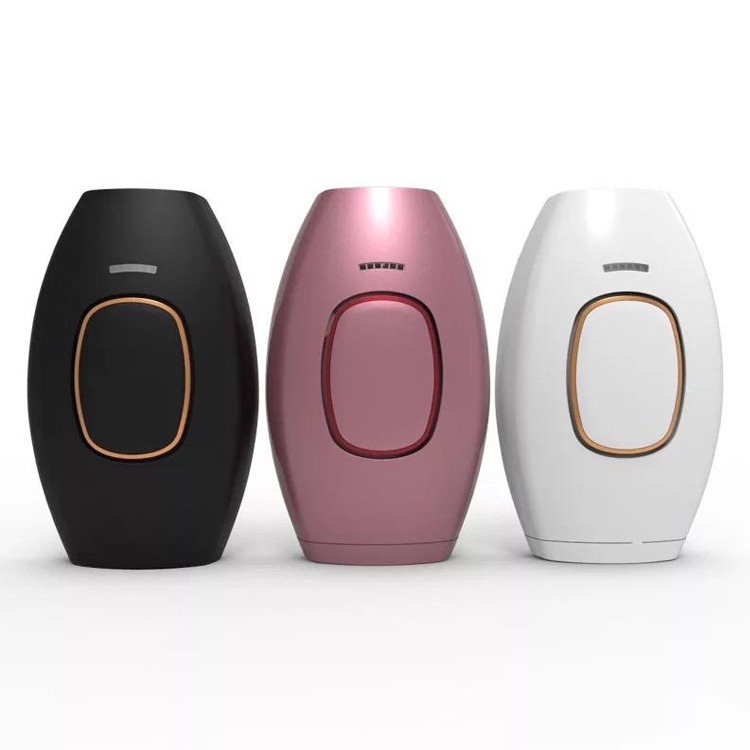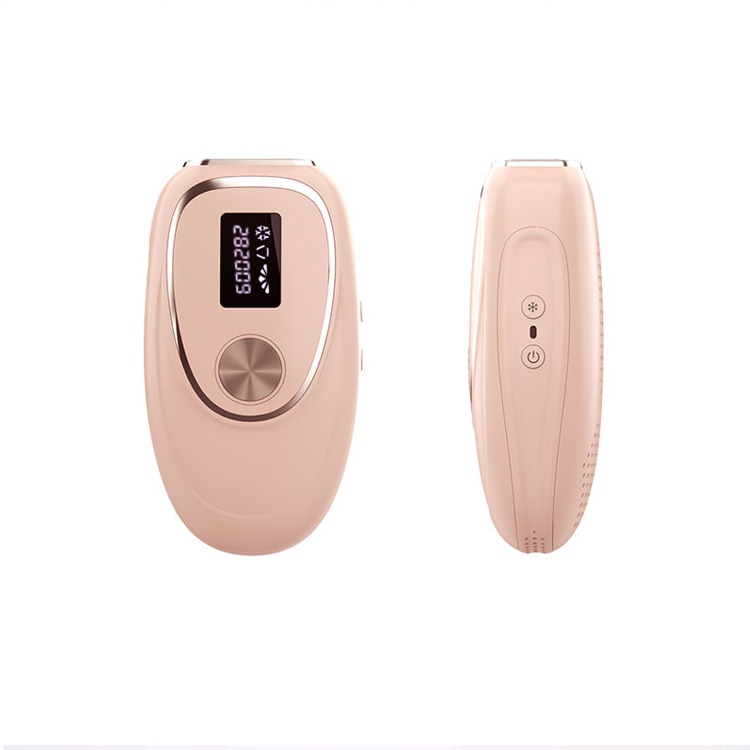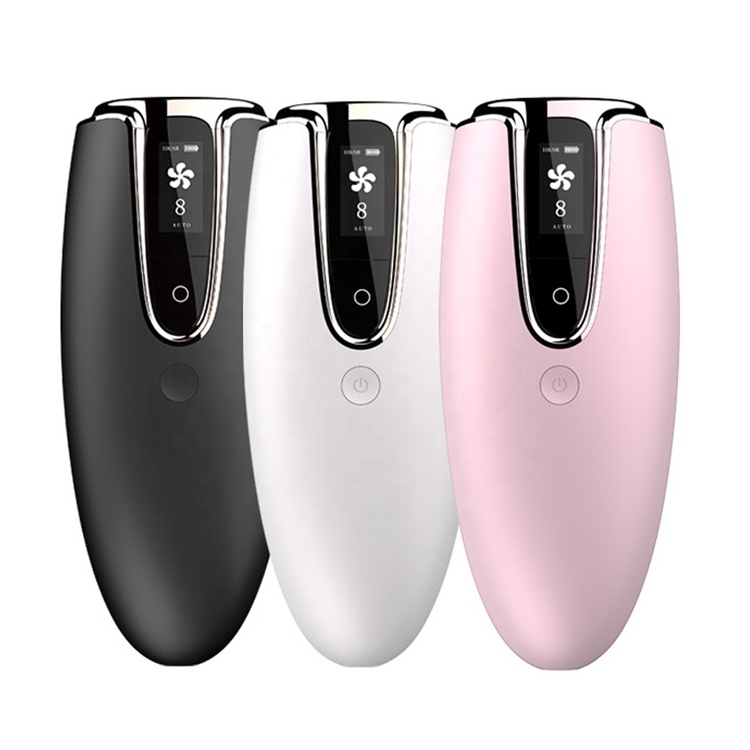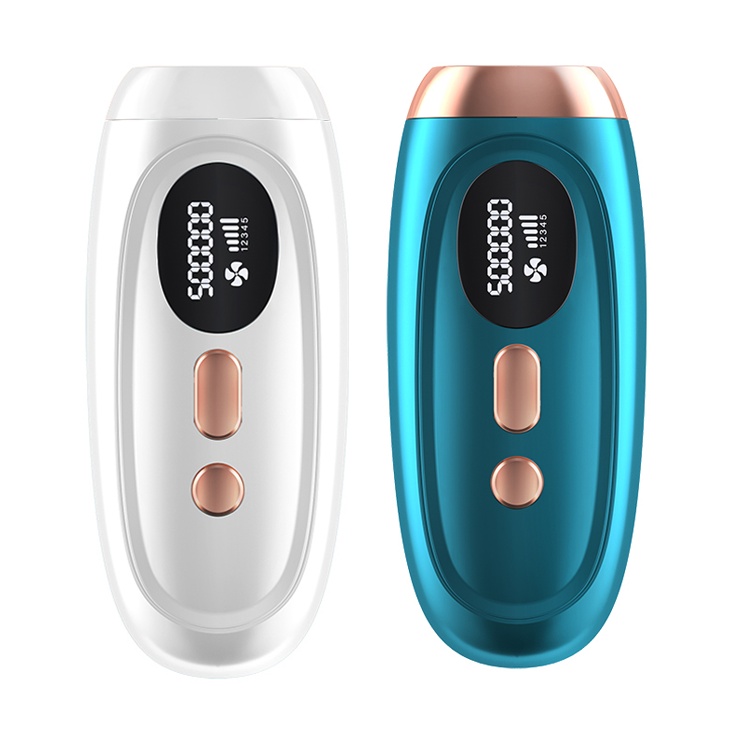IPL Hair Removal Devices or at home diode lasers which lasts longer?
Summary
IPL Hair Removal Devices are at-home devices that utilize Intense Pulsed Light (IPL) technology for hair removal, offering a convenient alternative to professional treatments. These devices emit a broad spectrum of light, which is absorbed by the melanin in hair follicles, effectively targeting and damaging them while minimizing harm to surrounding skin. This selective photothermolysis principle has made IPL devices increasingly popular among consumers seeking efficient and accessible hair removal solutions without the need for salon visits.
The market for IPL devices has seen significant growth, particularly in regions like Australia, where advancements in technology and rising personal grooming awareness have driven demand. Notable manufacturers such as Venus Concept and Candela Corporation have developed various models to cater to different user needs, although the initial costs of advanced technologies can be a barrier for some consumers.
This growing trend is further amplified by the COVID-19 pandemic, which led many to pursue at-home grooming options when professional services were restricted.
In comparison, diode laser hair removal devices represent a different technology that uses a single wavelength of light for deeper penetration into hair follicles, potentially offering more effective results, especially for certain skin types.
While both IPL and diode lasers operate on similar principles, the choice between them often depends on individual preferences, treatment goals, and skin characteristics, with IPL devices typically being more user-friendly for at-home use.
Despite their advantages, both types of devices raise safety concerns, particularly regarding improper usage that can lead to skin irritation or burns. As a result, users must be informed about the appropriate application techniques and be mindful of their skin types to ensure safe and effective results.
Overall, the growing market for at-home hair removal devices reflects a shift towards more accessible beauty solutions, yet the decision between IPL and diode laser options remains a crucial consideration for consumers seeking long-lasting results.
Overview
Intense Pulsed Light (IPL) hair removal devices have gained popularity as effective tools for at-home hair removal, offering consumers a convenient alternative to professional treatments. IPL technology functions by emitting a broad spectrum of light, typically ranging from 400 to 1200 nm, which is selectively absorbed by the hair follicle's melanin and converted into heat, leading to the destruction of the follicle while sparing surrounding tissue. This principle, known as selective photothermolysis, allows for targeted treatment with minimal downtime, making it appealing for users seeking quick results. The market for IPL hair removal devices in Australia is characterized by a growing demand driven by advancements in technology and increasing awareness of personal grooming practices. This surge in interest has led to the development of various models catering to different user needs, including devices from notable manufacturers such as Venus Concept and Candela Corporation. The competitive landscape is continuously evolving, with companies innovating to enhance the efficacy and safety of their products while addressing challenges such as high initial investment costs associated with advanced technology. In contrast, diode lasers, which utilize a single wavelength of light, offer a different mechanism for hair removal, penetrating deeper into hair follicles for potentially more effective results on certain skin types. While both IPL and diode lasers share a similar basis in selective photothermolysis, the choice between these technologies often hinges on individual preferences, treatment goals, and skin characteristics, with IPL devices typically being more accessible for at-home use.
History
Evolution of Hair Removal Practices
The perception and practice of hair removal have evolved significantly throughout history, reflecting changing beauty standards across different cultures and eras. In ancient civilizations, such as Ancient Egypt, smooth skin was highly valued and associated with cleanliness and elegance. Hair removal methods included techniques like sugaring and the use of pumice stones, which were prevalent at that time. During the Middle Ages, the significance of body hair diminished, and it was not until the 20th century that smooth skin regained prominence as a beauty ideal, particularly influenced by the advent of short dresses and swimwear. This shift drove the development of new hair removal technologies and practices, marking a continual progression towards more effective and less invasive methods.
Technological Innovations
The late 20th century saw the introduction of various technological advancements in hair removal. Initially, traditional methods like waxing, shaving, and threading were common. However, the demand for more long-lasting solutions led to the development of laser and intense pulsed light (IPL) technologies in the 1990s. These devices targeted hair follicles using light to disrupt the hair growth cycle, offering a more convenient and enduring alternative to previous methods. The initial application of lasers in dermatology was met with enthusiasm due to their ability to provide more precise and longer-lasting results compared to conventional techniques. Over time, as consumer demand for at-home hair removal solutions grew, manufacturers began developing devices designed for self-administration, making these technologies accessible for home use.
Rise of At-Home Devices
The emergence of at-home IPL and laser devices has transformed the landscape of hair removal in recent years. This trend gained momentum, particularly during the COVID-19 pandemic when many individuals sought ways to maintain their grooming routines at home while professional salons and clinics were closed. The convenience, affordability, and privacy offered by these home-use devices appealed to consumers looking for effective long-term solutions without the recurring costs of professional treatments. Technological advancements have led to the creation of devices featuring smart skin tone sensors, adjustable intensity settings, and integrated cooling systems, enhancing safety and user experience. These innovations have further propelled the popularity of at-home hair removal solutions, enabling consumers to achieve desired results in the comfort of their homes.
Types of Devices
At-home hair removal devices primarily include Intense Pulsed Light (IPL) and diode laser technologies. Both types offer distinct mechanisms of action and benefits for consumers seeking effective hair removal solutions.
Intense Pulsed Light (IPL) Devices
Mechanism and Functionality
IPL devices utilize a broad spectrum of light wavelengths to target hair follicles, emitting pulses of light that are absorbed by the pigment in the hair. This method works on the principle of selective photothermolysis, where specific wavelengths are absorbed by the hair while minimizing damage to surrounding skin. The convenience of IPL devices allows users to perform treatments in the comfort of their own homes, reducing the need for salon visits.
Skin Compatibility and Limitations
These devices are typically most effective on individuals with lighter skin tones and darker hair, as the contrast is necessary for optimal energy absorption. Users are advised to check the manufacturer's specifications to ensure their skin and hair color are suitable for the device. While IPL technology has evolved to include features such as built-in color sensors for enhanced safety, risks such as skin irritation and burns remain prevalent, particularly with improper usage.
Diode Laser Devices
Characteristics and Advantages
Diode laser devices are another popular choice for at-home hair removal. They operate at a specific wavelength (approximately 800 to 810 nm), which allows for deeper penetration into the skin compared to IPL. This capability makes diode lasers more versatile and effective for a broader range of skin tones, including those with darker complexions. The targeted nature of diode lasers also results in less epidermal damage, making them a preferred option for many users seeking both effectiveness and safety.
Recent Innovations
Recent advancements in diode laser technology have led to the integration of smart features and personalized treatment settings, enhancing user experience and treatment efficacy. These innovations include mobile app connectivity for progress tracking and maintenance reminders, appealing particularly to tech-savvy consumers who value convenience and personalization in their hair removal routines.
Hybrid Devices
A new category of devices has emerged, combining features of both IPL and diode technologies. These hybrid devices offer the advantages of both types, such as varying intensity settings and corded or cordless functionalities, catering to diverse consumer needs and preferences. The ongoing evolution in technology continues to drive the development of these multifunctional devices, aiming to meet the growing demand for effective and convenient hair removal options at home.
Effectiveness
The effectiveness of IPL (Intense Pulsed Light) and diode laser hair removal devices has been a subject of research and comparison, particularly regarding their performance in both professional and at-home settings.
Professional vs. Home Devices
Professional devices typically utilize high-power, high-quality equipment that can achieve significant hair reduction in fewer sessions compared to home devices. Advanced lasers such as Alexandrite and Nd:YAG are employed in clinical environments to tailor treatments to individual needs, resulting in higher efficacy. On the other hand, home-use devices, which predominantly feature IPL or diode technology, require consistent use over multiple sessions—typically six to eight—to achieve noticeable results. Although home devices are less powerful than their clinical counterparts, they serve as a convenient middle ground, offering more effective outcomes than traditional methods like shaving or depilatory creams, yet falling short of professional laser treatments.
Hair Reduction Rates
Clinical studies have shown that IPL can achieve hair reduction rates ranging from 40% to 80% after multiple sessions, with a notable study demonstrating a 78% reduction in hair count one month following six treatments with a home-use IPL device. While results can vary based on hair density, body area, and user compliance, the cumulative effect of consistent use tends to yield satisfactory outcomes for many users.
Long-Term Considerations
It is essential to recognize that maintenance sessions may be necessary, especially in hormone-sensitive areas such as the face and bikini line. Additionally, patients with conditions like polycystic ovary syndrome (PCOS) may experience different hair regrowth patterns. Generally, any regrowth is often finer and lighter, though not completely absent.
Safety and Side Effects
The use of at-home IPL (Intense Pulsed Light) and diode laser hair removal devices comes with a range of safety considerations and potential side effects. Although most devices are equipped with built-in safety features designed to protect users—such as sensors that allow the laser to operate only when pressed against the skin—precautions are still recommended, especially near sensitive areas like the eyes. Some individuals opt to wear protective goggles while using these devices, particularly when treating the face, to minimize any risk of eye damage.
Common Side Effects
Typical side effects of at-home laser hair removal treatments may include temporary pinkness, mild swelling, and small bumps on the skin. These effects are often mild and resolve quickly. However, more serious side effects can occur, including burns, blisters, and skin discoloration—both hyperpigmentation (darkening) and hypopigmentation (lightening). These issues can arise especially in individuals with darker skin tones due to the device's interaction with melanin in the skin, which can inadvertently affect pigmentation rather than solely targeting hair follicles.
Risks of Improper Use
The improper use of at-home devices poses significant risks.
- Burns and Blisters: Overuse or misuse of the devices can lead to skin burns, which may range from mild to severe. Risks are heightened due to the lack of professional medical evaluation of skin types and conditions, and inadequate settings for specific skin and hair types.
- Skin Discoloration: Both hyperpigmentation and hypopigmentation are possible, particularly among users with darker skin. This can be attributed to the device's inability to differentiate effectively between hair and skin pigmentation and may also result from incorrect intensity settings.
- Ineffective Hair Removal: At-home devices are generally less powerful than those used in professional settings, which often results in less consistent results and may require more frequent treatments over an extended period.
Safety in Different Skin Tones
Professional treatments tend to offer personalized settings tailored to individual skin and hair types, allowing for safer treatment across a wider range of skin tones. In contrast, many at-home devices are predominantly effective on lighter skin tones, which can limit their efficacy and safety for individuals with darker skin.
Post-Treatment Care
Following treatment, users should take precautions to ensure the best results and minimize side effects. These include avoiding sun exposure, applying cool compresses to the treated areas, and using cortisone cream to address any irritation or pigmentation issues. Understanding and adhering to the manufacturer's instructions regarding frequency and duration of use can significantly reduce the risk of adverse effects and enhance treatment efficacy.
Comparisons
Technology Overview
Both Intense Pulsed Light (IPL) and diode lasers are commonly utilized for long-term hair removal, yet they differ significantly in technology and effectiveness. Diode lasers are recognized for their versatility and efficiency, particularly in accommodating a wide range of skin tones and hair types. They deliver customizable pulse durations and high-speed treatments, making them a preferred choice for professional and at-home solutions alike. In contrast, IPL systems tend to have a broader spectrum of light and may not provide the same level of precision across varying skin tones and hair types.
Efficacy and Safety
Efficacy plays a crucial role in the adoption of these devices. Diode lasers have shown superior performance in hair removal, especially when it comes to delivering consistent results with minimal discomfort. Users report that treatments with diode lasers are often painless and can effectively treat larger areas of the body, such as legs and arms, while still being effective for smaller, more sensitive areas. On the other hand, IPL devices may result in varying levels of discomfort, and their effectiveness can be influenced by the user's skin type and hair color.
User Experience
The user experience is another factor where diode lasers generally outperform IPL devices. Advanced diode laser models come equipped with features such as built-in cooling systems and multiple intensity settings, which enhance comfort during treatments. Moreover, recent innovations have integrated mobile app functionalities that allow users to track their treatment schedules and progress, adding a layer of convenience that is often absent in IPL systems. In contrast, IPL devices are often perceived as less user-friendly and may require more meticulous pre-treatment preparations, such as shaving the area beforehand.
Cost Considerations
When evaluating cost, diode lasers are typically positioned at a higher price point due to their advanced technology and efficacy. While the upfront costs may be substantial, users often find that diode lasers offer long-term savings by reducing the frequency of treatments needed over time. Conversely, IPL devices tend to have lower initial costs, but their effectiveness can lead to ongoing expenses as users may require more frequent sessions to achieve and maintain results.
Recommendations
Choosing the Right Device
When selecting between IPL hair removal devices and diode lasers, it is essential to consider your skin type, hair type, and personal goals. For individuals with light to medium skin and dark hair, IPL is a cost-effective option that offers a good starting point for at-home hair reduction. Conversely, those willing to invest more for faster and longer-lasting results, particularly for coarser hair or challenging areas like the bikini line and underarms, may find diode lasers to be a superior choice.
Cost Considerations
While the upfront cost of professional treatments may seem higher, at-home devices typically do not incur ongoing costs such as gels or cartridges. For the price of just a few in-clinic sessions, one can purchase a personal device that lasts for years, making it a worthwhile investment for long-term hair reduction. In general, avoid devices priced under $100, as they may lack essential safety features or adequate power to yield effective results.
Treatment Frequency and Expectations
For effective outcomes, consistency is key. Users should adhere to regular treatment schedules to achieve the best results, particularly with technologies like SHR, which necessitates fewer touch-ups than traditional IPL due to its dual-action mechanism. Most clients typically experience noticeable hair reduction after 6-8 sessions, with recommendations for maintenance sessions every 4-6 weeks in environments with rapid hair growth, such as Singapore.
Safety and Contraindications
It is crucial to assess personal health conditions before beginning treatment. Absolute contraindications exist for at-home devices, and anyone unsure about their suitability should consult a dermatologist or a qualified laser technician to ensure safe and effective use. Those with skin conditions, hormonal imbalances, or specific medications should prioritize expert guidance before starting any treatment regimen.
Final Advice
Ultimately, the choice between IPL and diode laser devices should align with your individual hair removal goals, skin type, and budget. If unsure, seeking professional advice is always recommended to navigate the complexities of hair removal technology safely.
Market Trends
Regulatory Environment
The landscape for IPL hair removal devices is heavily influenced by regulatory requirements, particularly in the United States. The Environmental Protection Agency's restrictions on certain chemical ingredients used in depilatory products have increased formulation challenges for manufacturers, leading to higher development costs to ensure compliance while maintaining product effectiveness. Additionally, the Department of Labor's workplace safety regulations necessitate extensive testing and documentation, imposing further compliance costs and potential barriers to market entry.
Market Segmentation
The IPL market can be segmented based on various factors, including application, distribution channel, price range, and skin type. Professional applications dominate the market, with segments for salon use, spa services, and medical aesthetics. The unisex segment, offering family and general grooming products, is also growing in popularity. Distribution channels vary from supermarkets and pharmacies to online retail and specialty stores, each catering to different consumer preferences and shopping behaviors.
Regional Growth Dynamics
Geographically, the market is witnessing varied growth trends. Latin America, particularly Brazil and Mexico, exhibits robust growth driven by cultural attitudes toward personal aesthetics and improving economic conditions. The Asia-Pacific region, characterized by rapid economic development and increased beauty consciousness, stands out as the fastest-growing market, with countries like China, Japan, and South Korea leading the charge. Meanwhile, the European market emphasizes high-quality, safety-certified devices due to stringent regulations, further promoting cross-border trade.
Demographic Influences
Demographic trends favor market expansion, as millennials and Generation Z consumers—who are increasingly inclined toward at-home beauty solutions—enter their peak earning years. The participation of women in the workforce also drives demand for efficient, time-saving beauty products that yield salon-quality results. However, concerns over market saturation are rising in developed regions, where rapid growth in at-home beauty device categories may be unsustainable in the long term.
Consumer Preferences and Innovations
The emphasis on design and aesthetics is changing consumer preferences within the IPL market. Manufacturers are focusing on creating sleek, ergonomic products that appeal to style-conscious buyers, alongside user-friendly interfaces that enhance usability. As the competitive landscape evolves, new entrants and niche players are utilizing targeted marketing strategies and innovative designs to capture specific consumer segments.
Safety and Economic Considerations
Consumer safety concerns, particularly regarding incidents associated with improper use of IPL devices, continue to influence market dynamics. Regulatory oversight from the Consumer Product Safety Commission has documented such incidents, prompting increased wariness among consumers. Additionally, the economic sensitivity of personal care device sales is apparent, with discretionary income levels significantly affecting purchasing decisions.
Cultural Impact and Advertising
Cultural attitudes toward hair removal and grooming are also shaping market dynamics. The media's portrayal of hairless skin as an attractiveness standard has significantly impacted consumer behavior, especially among younger generations. Marketing strategies have adapted to target the growing male demographic as well, reflecting a shift towards gender-neutral grooming practices in the industry.
Future Developments
Technological Advancements
The future of IPL hair removal devices is closely tied to ongoing technological innovations. Current trends indicate that the integration of artificial intelligence and machine learning will play a pivotal role in personalizing treatment plans and enhancing the user experience. Devices equipped with smart skin tone sensors and app connectivity are expected to become more prevalent, allowing for customized treatment recommendations based on individual user data. This personalization could significantly increase consumer engagement and satisfaction, thereby driving market growth.
Market Expansion
The market for both at-home and professional diode laser hair removal devices is projected to expand significantly. With rising disposable incomes and changing beauty standards, emerging markets, particularly in Asia and Latin America, are expected to be key growth drivers. Additionally, as consumer preferences shift towards convenient, home-use solutions, the demand for portable and user-friendly devices will likely increase, leading to a broader consumer base.
Competitive Landscape
To remain competitive, industry players are focusing on product differentiation by offering unique features such as customizable settings and ergonomic designs. Companies are also leveraging collaborations and partnerships with research institutions to innovate and integrate cutting-edge technology into their products. This continuous innovation is essential to address consumer demand for effective, safe, and convenient hair removal solutions.
Regulatory and Economic Factors
The evolving regulatory landscape will also impact future developments in the IPL hair removal market. Lenient regulatory compliance is expected to promote innovation and market accessibility, facilitating faster product development and a wider range of available technologies. Economic factors, including fluctuations in disposable income, will continue to influence consumer spending patterns on aesthetic procedures, impacting overall market growth.
Consumer Trends
As the beauty industry increasingly emphasizes personal care and wellness, consumer interest in at-home solutions for hair removal is expected to rise. The trend towards long-term results, convenience, and efficacy is driving a shift away from traditional methods, indicating a bright future for IPL devices. E-commerce platforms and social media are also becoming pivotal in influencing purchasing decisions, as consumers rely on online reviews and influencer endorsements to guide their choices.
 English
English Español
Español Português
Português Pусский
Pусский Français
Français Deutsch
Deutsch 日本語
日本語 한국어
한국어 Italiano
Italiano عربى
عربى




